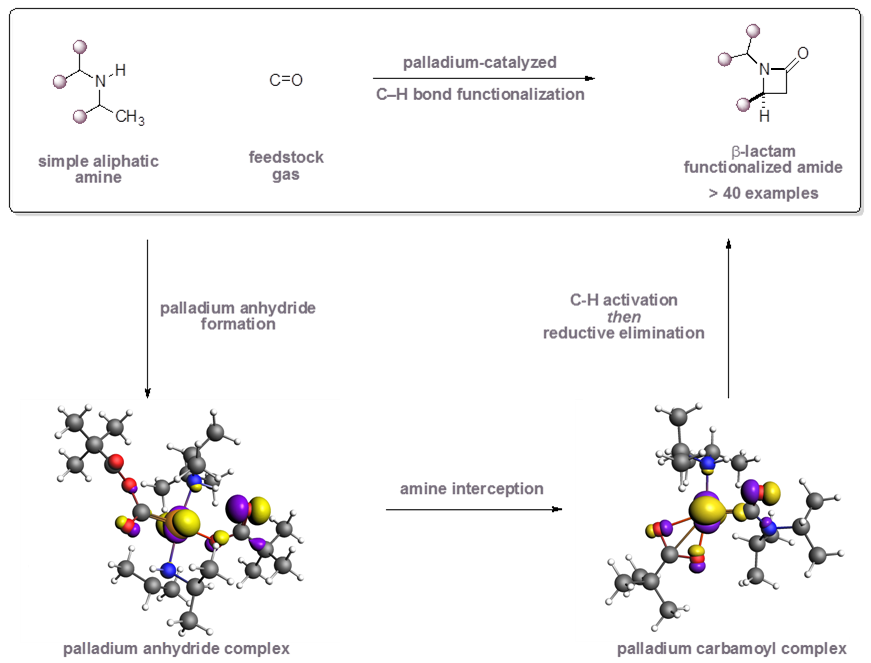A general Pd-catalyzed pathway to β-lactams
In a recent Science paper the Gaunt group reports facile access to β-lactams via palladium-catalyzed coupling of aliphatic amines and carbon monoxide. The scope of the reaction is remarkably broad; over 40 substrates are illustrated, bearing a wide range of substitution patterns and functional groups. The extensive functional group tolerance of the catalyst enables late-stage functionalization, which is a powerful synthesis strategy to allow rapid access to diverse amine-containing pharmaceutical agents.
Dispersion corrected DFT (BLYP-D3) calculations with ADF were central to unraveling the reaction mechanism. The calculations suggested that the migration of a carboxylate ligand onto a palladium bound carbonyl could form a palladium anhydride intermediate, which reacts with the amine to provide a palladium carbamoyl complex. This palladium carbamoyl complex then undergoes C(sp3)-H activation to provide a palladacycle, which yields the β-lactam product after reductive elimination.

D. Willcox, B.G.N. Chappell, K.F. Hogg, J. Calleja, A.P. Smalley, and M.J. Gaunt, A general catalytic β-C–H carbonylation of aliphatic amines to β-lactams, Science 354 851-857 (2016).
Key conceptsADF catalysis Dispersion heavy elements inorganic chemistry pharma Reactivity Relativistic DFT